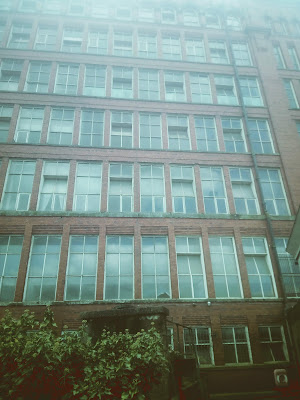The Plastic Reel

The English Sewing Company News published an article in the May 1967 edition that would catch the eye of any Sylko fan with its title "Plastic Spools for Sylko". I have often wondered when the change from wooden to plastic reels occurred, and the following write up gives a heavy clue: "A new company which will manufacture plastic spools is being established at Skipton by the thread division. Called Plastic Spools Ltd, it is a joint venture with Crane and Percival...The company will be housed next to Skipton Mill in a building which is at present used for storage and where wooden spools were made temporarily in the early 1940s. It will be equipped with modern machinery costing more than £125,000 and will cater for the entire Sylko 100 yards and Trylko production. Trylko was successfully introduced on plastic spools last year, as was Super 6 Cord two years ago." The mill buildings at Skipton in 2022 There's much to mull over there. I think we can surmise that th...




